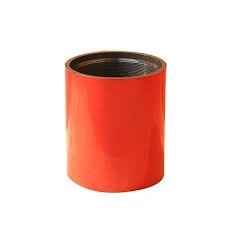- Afrikaans
- Albanian
- Amharic
- Arabic
- Armenian
- Azerbaijani
- Basque
- Belarusian
- Bengali
- Bosnian
- Bulgarian
- Catalan
- Cebuano
- Corsican
- Croatian
- Czech
- Danish
- Dutch
- English
- Esperanto
- Estonian
- Finnish
- French
- Frisian
- Galician
- Georgian
- German
- Greek
- Gujarati
- Haitian Creole
- hausa
- hawaiian
- Hebrew
- Hindi
- Miao
- Hungarian
- Icelandic
- igbo
- Indonesian
- irish
- Italian
- Japanese
- Javanese
- Kannada
- kazakh
- Khmer
- Rwandese
- Korean
- Kurdish
- Kyrgyz
- Lao
- Latin
- Latvian
- Lithuanian
- Luxembourgish
- Macedonian
- Malgashi
- Malay
- Malayalam
- Maltese
- Maori
- Marathi
- Mongolian
- Myanmar
- Nepali
- Norwegian
- Norwegian
- Occitan
- Pashto
- Persian
- Polish
- Portuguese
- Punjabi
- Romanian
- Russian
- Samoan
- Scottish Gaelic
- Serbian
- Sesotho
- Shona
- Sindhi
- Sinhala
- Slovak
- Slovenian
- Somali
- Spanish
- Sundanese
- Swahili
- Swedish
- Tagalog
- Tajik
- Tamil
- Tatar
- Telugu
- Thai
- Turkish
- Turkmen
- Ukrainian
- Urdu
- Uighur
- Uzbek
- Vietnamese
- Welsh
- Bantu
- Yiddish
- Yoruba
- Zulu
Understanding the Function and Purpose of a Bull Plug in Plumbing Systems
Understanding Bull Plugs Purpose, Use, and Safety
In the world of plumbing and fluid dynamics, the term bull plug may not be a common household name, but it serves an essential function in various applications. A bull plug, also known as a blind plug or a test plug, is a type of fitting used to close off pipes or other openings in a plumbing system. This article will delve into what bull plugs are, their purposes, how they are used, and considerations for safe use.
What is a Bull Plug?
A bull plug is a solid fitting designed to seal the end of a pipe. Typically made from materials like brass, stainless steel, PVC, or other durable substances, these plugs are available in various sizes to accommodate different piping systems. The term bull plug specifically refers to the conical or threaded design that allows for a secure fit in the threaded openings found in pipes.
Purpose of Bull Plugs
The primary function of a bull plug is to prevent the escape of fluids from a pipe system. Here are several specific applications of bull plugs
1. Isolation of Pipe Sections When maintenance or repairs are needed, bull plugs can isolate specific sections of pipe by sealing them off. This ensures that the rest of the system remains operational while work is conducted.
2. Testing and Inspection Bull plugs are often used during pressure testing of pipe systems. By sealing openings, plumbers and engineers can pressurize the system to check for leaks and assess its integrity.
3. Preventing Contaminants In systems that transport sensitive fluids, bull plugs prevent contaminants from entering the pipeline when the system is inactive.
4. Temporary Solutions In construction or renovation projects, bull plugs can serve as temporary solutions to keep water or other fluids from flowing into newly installed pipe sections before they are connected to the main system.
Installation and Use
Installing a bull plug is typically a straightforward process. Here are the general steps
1. Choose the Right Size Ensure that the bull plug matches the diameter of the pipe opening you intend to seal. Using a plug that’s too small or too large can result in leaks.
what is a bull plug

2. Clean the Threads Before installation, clean the threads of the pipe to remove any debris or old sealant.
3. Apply Thread Sealant (if necessary) For threaded fittings, applying a thread sealant or Teflon tape can help create a watertight seal.
4. Screw in the Bull Plug Carefully thread the bull plug into the pipe opening, turning it clockwise until it is securely in place. Avoid over-tightening, which can damage the fitting or the pipe.
5. Test for Leaks After installation, conduct a pressure test or visually inspect for leaks to ensure a proper seal.
Safety Considerations
While installing a bull plug is generally safe, there are some important considerations to keep in mind
1. Material Compatibility Ensure the bull plug material is compatible with the fluid being contained. For example, using a PVC plug in a high-temperature steam system may not be suitable.
2. Pressure Ratings Check the pressure ratings of both the bull plug and the surrounding pipe. Using a plug rated for lower pressures in a high-pressure system can lead to catastrophic failure.
3. Proper Tools Use the appropriate tools to install and remove bull plugs. This will help prevent damage and injury.
4. Safety Gear When working with pressurized systems, always use appropriate safety gear, such as goggles and gloves, to protect against potential hazards.
Conclusion
Bull plugs, while not frequently discussed, play a crucial role in the plumbing and fluid transport industries. Their ability to effectively seal pipe openings ensures the integrity of fluid systems, making them indispensable for maintenance, testing, and construction applications. Understanding their functions, installation procedures, and safety considerations can greatly enhance their effectiveness and longevity in any plumbing setup. Whether you're a DIY enthusiast or a seasoned professional, recognizing the value of bull plugs is essential in ensuring a smooth-running plumbing system.
-
Tubing Pup Joints: Essential Components for Oil and Gas OperationsNewsJul.10,2025
-
Pup Joints: Essential Components for Reliable Drilling OperationsNewsJul.10,2025
-
Pipe Couplings: Connecting Your World EfficientlyNewsJul.10,2025
-
Mastering Oilfield Operations with Quality Tubing and CasingNewsJul.10,2025
-
High-Quality Casing Couplings for Every NeedNewsJul.10,2025
-
Boost Your Drilling Efficiency with Premium Crossover Tools & Seating NipplesNewsJul.10,2025







